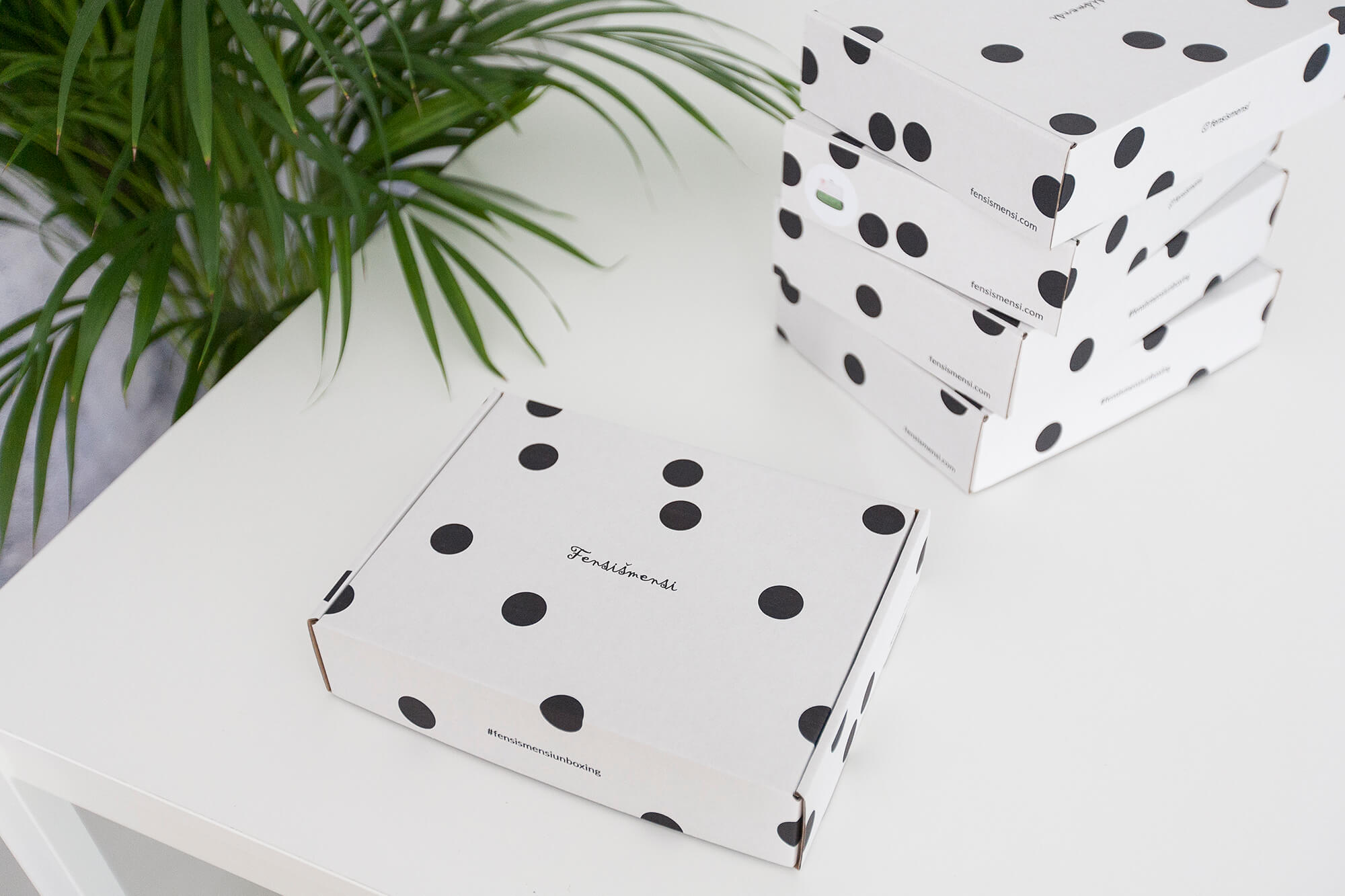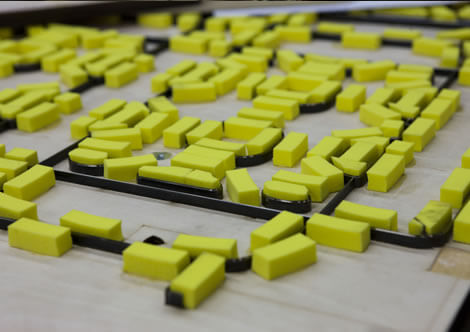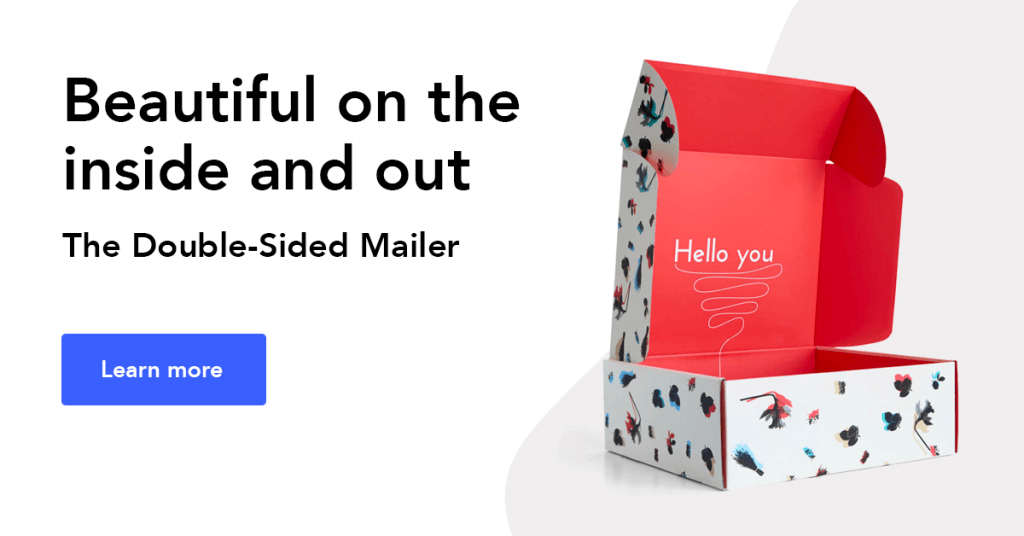Understanding the Die Cutting Process in Custom Packaging


Subscribe now! Receive 15% discount.
Don’t miss out – get 15% off your first order when you join the newsletter. It’s fast, free, and kinda smart.
You're now subscribed!
In this article:
The die-cutting process is a popular manufacturing technique within the packaging industry. It involves the use of a die that is used to cut soft materials into a variety of packaging designs and shapes.
The ability to mass-produce custom packaging is where the real value of the die-cutting process lies. Die-cut packaging is easier, faster and more cost-effective to create custom packaging at a larger scale.
In this article, we'll be exploring the die-cutting process and its role in custom packaging.
You'll also see:
- A detailed explanation of die-cutting boxes
- How a cutting die is made
- Die-cutting techniques
- FEFCO corrugated packaging categories
- Finishing options that complement die-cut box designs
Packhelp have a range of die-cut boxes that will make your brand stand out.
Understanding the Die Cutting Process
A cutting die is essentially a giant cookie cutter that is pressed into the material to form the desired shape of the packaging.
Die-cutting has come a long way from its origins in the shoemaking industry during the industrial revolution.
Initially designed to aid the mass production of packaging, die-cutting has developed into a versatile fabrication process.
Virtually any shape, design or pattern can be created using a cutting die.

Custom packaging is produced using custom steel dies and die-cutting machines.
This form of manufacturing allows for the mass production of packaging. But more importantly, die-cut packaging ensures precision accuracy.
How is a cutting die made?
Developments in technology and manufacturing techniques of cutting dies, ensure the most effective and accurate design of die-cut boxes. Typically, the packaging outline is generated by Computer-Aided Design (CAD).
This digitised drawing is transferred onto a piece of hardwood known as a die board.
The most sophisticated method for drawing designs onto die boards is by burning onto the wooden surface using state of the art laser cutters.
The introduction of lasers in this process has ensured greater accuracy of the drawing on the die board.
The cutting die uses strips of metal called rules or steel rules. The cutting ruler is formed into shape using a rule bender which bends, cuts and notches steel into the shape needed.

A variety of cutting rules can be used in the die-cutting process. Each rule has its own function and its use depending on the complexity of the packaging.
Some of the most common rule options are:
- Through Cutting: Through cutting cuts through the packaging material.
- Scoring: Rather than cutting the whole way through the material, scoring leaves an impression indent or partial cut on a single stress point.
- Creasing: Creasing is similar to scoring where the die creates a fold line on the packaging material. Unlike scoring, creasing allows for inward bending of the material by having two parallel stress points. Havings two stress points allow for greater flexibility of the material.
- Perforating: Perforating involves indenting a line of holes along the design material. The design is not separated from the material itself but can easily detach along the perforated lines.
Each rule is built to accommodate the thickness of the material and flute size.
The steel rules are hammered into the die board by hand. A variety of foam and rubber pieces are then glued onto the die.
These pieces assist the die in bouncing off the corrugated board during production.

Source: Accurate Products
The die-cutting machine presses the die firmly into the cardboard which results in a cut-out shape (remember the cookie-cutter).
Depending on the complexity of the packaging design, this cut out has several lines, creases and folds which are used to assemble the packaging by hand.
The excess material is all gathered up and recycled to be used again.
Making individual dies for each piece of packaging is a costly exercise. However, it's a one-off cost that is offset when multiple orders of the same packaging are made over time.
Die-cutting techniques
Die-cutting is still very much analogue and manual in nature. Although technology is used in the process, the fastest method for mass-produced custom packaging is still with a manually built cutting die.
The two most popular die-cutting techniques in packaging are:
Flatbed Die Cutting:
Flatbed dies are made with a flat, rectangular piece of hardwood (die board) that contains the unique die shape.
It involves the use of a cutting die, that is firmly pressed into the cardboard by a flatbed machine.

Source:PDLC
Flatbed die machines have a small blank size, so they are not suggested for larger designs. However, they are capable of making intricate, detailed designs such as small cut-outs, tight cuts and slit scores.
Rotary Die Cutting:
Rotary cuttie dies are made with a cylindrical press and rolled over the cardboard rather than pressed down like the flatbed die cutter.
Rotary die-cutting is a much quicker process and is ideal for mass production of simple designs.

Some rotary die-cutting machines can even perform two functions at once, such as embossing, lamination, etc.
Although producing higher volumes at a faster rate, rotary cutting machines aren't always the best option.
The type of technique/machine used depends on the design and desired functionality of the packaging.
Digitalised die-cutting
Developments in technology within the industry has digitalised the die-cutting process. The traditional methods are still the most prominent and frequently used; however, it is now possible to die cut packaging without the use of steel knives.
These highly advanced machines use computerised controls and lasers to make the cuts in the place of steel rules. ESKO and Zünd are industry leaders in manufacturing these digitalised machines.

Despite the advancements in technology, digitalised die-cutting machines are limited in their capabilities.
They are a viable option for low-medium order volumes however are not yet as fast as analogue methods/machinery.
Custom Packaging Examples
The die-cutting process makes it possible to create virtually any kind of packaging no matter the size, material, fold or function.
This freedom and range of packaging functionality have significant benefits to your company's fulfilment process.
There are several types of die-cut packaging options available.
The European Federation of Corrugated Board Manufacturers (FEFCO), is the industry body that regulates the corrugated industry in the United Kingdom and European Union.

The organisation has standardised corrugated packaging into digitalised code. These codes have replaced complicated code descriptions and are recognised across the United Kingdom and Europe.
FEFCO has broken down corrugated box designs into eight categories.
These categories serve as the basis for die-cut boxes and can be modified in several ways to create unique custom packaging.
The categories are as follows:
Commercial Rolls & Sheets
Commercial rolls and sheets are typically used to protect glass while in storage and during transportation.
Slotted-type Boxes
Slotted box types generally consist of one piece of card with either a glued, stitched or taped manufacturers joint shut. Most commonly, they are flat packed and need to be sealed by hand during assembly.
A typical example of a slotted type box is a shipping box.
Telescope-Type Boxes
Telescope-type boxes are made up of multiple pieces of corrugated cardboard. They are characterised by a lid and/or bottom that 'telescopes' over the body of the box.
Folder-Type Boxes & Trays
Folder-type boxes and trays usually consist of one piece of board. The bottom of the box is hinged, forming all of the walls and the cover. Several additions can be incorporated into specific designs such as locking tabs, display panels or handles.
Slide-Type Boxes
Slide-type boxes consist of several pieces of liners and sleeves sliding in different directions into each other. This FEFCO category also includes outer sleeves for other boxes.
Rigid-Type Boxes
Rigid-type boxes are made up of two separate end pieces with a body. The box components require stitching or similar fixing before they are fit for use.
A two-piece product box is an example of a rigid-type box.
Ready-glued Cases
Ready-glued cases are typically simple to assemble. This style is essentially one piece of corrugated cardboard that is shipped flat.
Interior Fitments
Interior fitments are individual components designed to be used with other box styles, most commonly partitions or dividers to protect objects from one another, but may also feature liners or pads.
Create your very own custom cardboard boxes with Packhelp. Click here to get a quote!
The Finishing Touch in the Die Cutting Process
The die-cutting process enables truly unique custom packaging. Intricate, sophisticated design in luxury packaging provides a touch of elegance that will leave a lasting impression on the user.
But what if this luxurious style was taken further?

There are a variety of finishing techniques that accentuate the die-cut design of custom packaging. This emphasis on packaging design resonates with consumers and positively impacts their future purchasing decisions.
Take a look at some of the most popular finishing options and get the most out of your custom die-cut boxes:
Embossing
Embossing is a printing technique that raises the print higher off the surface of the packaging. The embossing machine creates an elegant finish that the user can not only see but feel.
The pressure of high temperature creates the embossing effect. A metal die is made (similar to a cutting die) that is then used to emboss the desired surface.
 It is also possible to deboss - the opposite of embossing whereby the design is pressed underneath the packaging surface. This effect creates an indented look to the finish.
It is also possible to deboss - the opposite of embossing whereby the design is pressed underneath the packaging surface. This effect creates an indented look to the finish.
Whether it's an embossed or debossed finish, it is best coupled with high-quality die-cut packaging such as a rigid box.
UV Print
UV printing utilises ultraviolet curing technology during the printing process. Once the packaging material passes through the printer, it receives wet ink that is immediately exposed to UV light.
 The exposure to the UV light dries the ink instantly, preventing seepage or the ink spreading in the process. This method provides sharp, vibrant printing that is the perfect accompaniment to a well-designed die-cut box.
The exposure to the UV light dries the ink instantly, preventing seepage or the ink spreading in the process. This method provides sharp, vibrant printing that is the perfect accompaniment to a well-designed die-cut box.
Hot Stamping
Hot stamping is a finishing technique for custom packaging that uses high temperature for glueing foil or dry paint into the desired shape.
The finishes are pressed on with a die which transfers the heat. Hot stamping is great to pair with other finishing techniques, such as embossing or debossing.

This kind of finishing would work well with a bespoke box such as a magnetic box.
Final Thoughts
The die-cutting process makes it possible to create a wide range of custom packaging boxes. The method ensures accuracy in design but also enables high volume production.
The varied die-cutting techniques, machines and styles provide a diverse range of packaging functions. This functionality separates custom packaging from standardised packaging, rendering infinite possibilities.




























